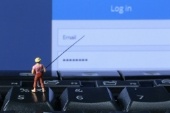

What is known as “CEO fraud” and “business email compromise” is costing companies and individuals millions. Just ask Ubiquiti Network’s Inc. who recently suffered a devasting $46,700,000.00 fraud.
This is a big one, one of the biggest employee impersonation frauds ever.
Ubiquiti Network’s Inc. reported via SEC Form 8-K, “employee impersonation and fraudulent requests from an outside entity targeting the Company’s finance department resulted in transfers of funds aggregating $46.7 million held by a Company subsidiary incorporated in Hong Kong to other overseas accounts held by third parties.”
What is known as “CEO fraud” and “business email compromise” is costing companies and individuals millions. This is a sophisticated cyber phishing approach that targets businesses working with foreign suppliers that regularly perform wire transfer payments.
 Businesses have big bank accounts and mostly ineffective security and verification policies. When discussing better visibility, it not only refers to seeing 100% of the data, but also taking corrective action, checking and cross checking, and having protocols in place to deter criminals from stealing money, data, or anything else that would jeopardize businesses.
Businesses have big bank accounts and mostly ineffective security and verification policies. When discussing better visibility, it not only refers to seeing 100% of the data, but also taking corrective action, checking and cross checking, and having protocols in place to deter criminals from stealing money, data, or anything else that would jeopardize businesses.
Following an investigation, “the Company, its Audit Committee and advisors have concluded that the Company’s internal control over financial reporting is ineffective due to one or more material weaknesses”.
Ubiquiti’s Chief Accounting Officer resigned.
As of today, there are no details on how this cyber crime occurred, but CEO fraud usually begins with the thieves either phishing an executive and gaining access to that individual’s inbox, or emailing employees from a look-alike domain name.
Would a full visibility plane have helped in detection in this case? Well, it would have shown what was 'normal' and what is not. By knowing the baseline traffic, companies can determine aberrant behavior and put safe guards in place. Full visibility should be part of an early alarm and used during the primary investigative process.
If you cannot see it, you will never be able to fix it!
Download, How to Determine Your Baseline Traffic, by Tim O'Neill, for a step-by-step guide with typical measurements and screen shots.
If the inline security tool goes off-line, the TAP will bypass the tool and automatically keep the link flowing. The Bypass TAP does this by sending heartbeat packets to the inline security tool. As long as the inline security tool is on-line, the heartbeat packets will be returned to the TAP, and the link traffic will continue to flow through the inline security tool.
If the heartbeat packets are not returned to the TAP (indicating that the inline security tool has gone off-line), the TAP will automatically 'bypass' the inline security tool and keep the link traffic flowing. The TAP also removes the heartbeat packets before sending the network traffic back onto the critical link.
While the TAP is in bypass mode, it continues to send heartbeat packets out to the inline security tool so that once the tool is back on-line, it will begin returning the heartbeat packets back to the TAP indicating that the tool is ready to go back to work. The TAP will then direct the network traffic back through the inline security tool along with the heartbeat packets placing the tool back inline.
Some of you may have noticed a flaw in the logic behind this solution! You say, “What if the TAP should fail because it is also in-line? Then the link will also fail!” The TAP would now be considered a point of failure. That is a good catch – but in our blog on Bypass vs. Failsafe, I explained that if a TAP were to fail or lose power, it must provide failsafe protection to the link it is attached to. So our network TAP will go into Failsafe mode keeping the link flowing.
Single point of failure: a risk to an IT network if one part of the system brings down a larger part of the entire system.
Heartbeat packet: a soft detection technology that monitors the health of inline appliances. Read the heartbeat packet blog here.
Critical link: the connection between two or more network devices or appliances that if the connection fails then the network is disrupted.